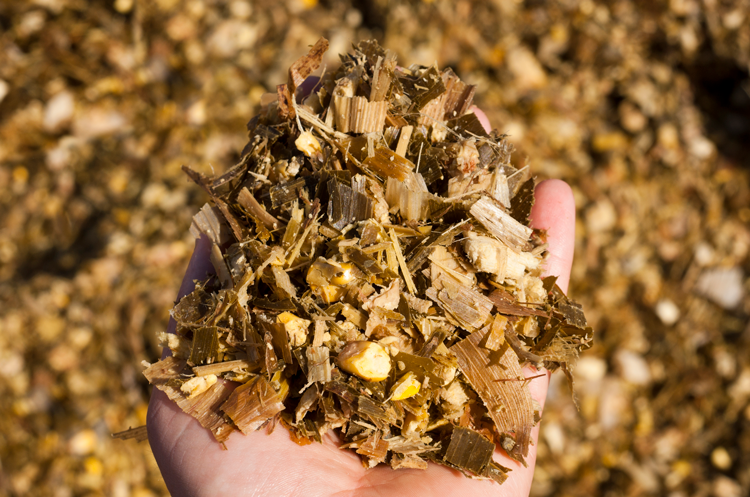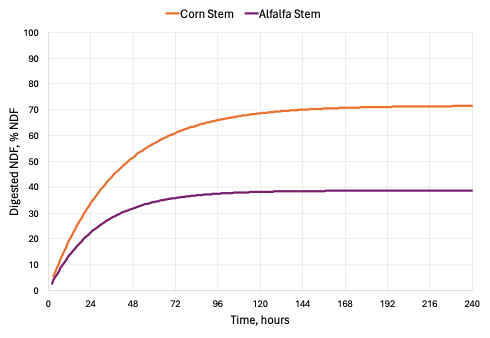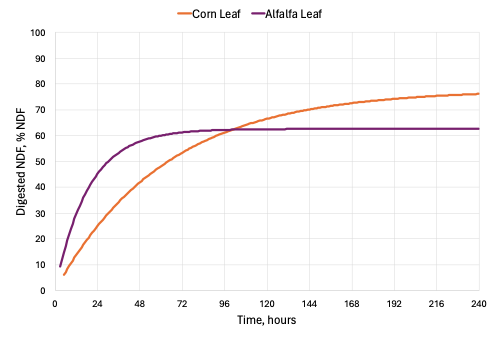
In past articles, I have addressed some limitations of undegraded neutral detergent fiber (uNDF) as an indicator of forage quality. In general terms, the fiber of alfalfa forages is known for being less degradable than the fiber of both warm-season and cool-season grasses. The figures below, for example, depict the ruminal degradation of NDF of alfalfa and corn tissues over 10 days.


The figure on top shows that ruminal microbes degraded 38.7% and 71.5% of the NDF in stems of alfalfa and corn, respectively, after 10 days. These numbers mean that corn stems had a concentration of uNDF equal to 28.5%, and alfalfa stems had a concentration of uNDF equal to 61.3% (on an NDF basis).
Similarly, the figure on the bottom shows that corn leaves had a concentration of uNDF equal to 23.8%, and alfalfa leaves had a concentration of uNDF equal to 39.4%. With an isolated or abstracted perspective, these values imply that the degradability of NDF from corn is greater than that of alfalfa.
However, if we combine the concentration of uNDF and the rate of degradation, then the interpretation can differ. The top figure, for example, shows that 39.4% of the NDF in corn stems and 25.6% of the NDF in alfalfa stems degrades after 30 hours. In this case, fiber degradation ranks corn stems above alfalfa stems. However, the bottom figure shows that 29.8% of the NDF in corn leaves and 49.9% of the NDF in alfalfa leaves degrades after 30 hours. In this case, fiber degradation ranks alfalfa leaves above corn leaves, regardless of the greater uNDF concentration of alfalfa.
In summary, uNDF reflects the potential degradation of the NDF but no more than that. The actual utilization of NDF depends on the concentration of uNDF and the rates of degradation and passage of the potentially degradable NDF. As my graduate student said, the delicate balance between the rates of degradation and passage determines the effective utilization of fiber.








